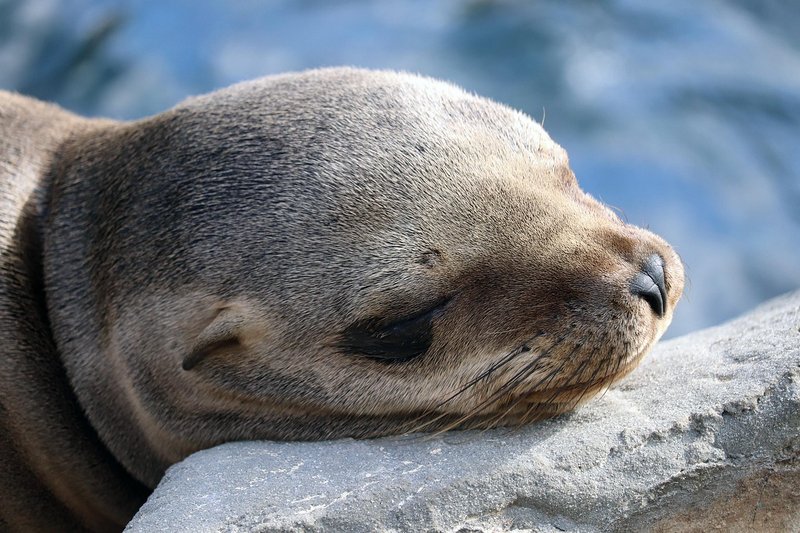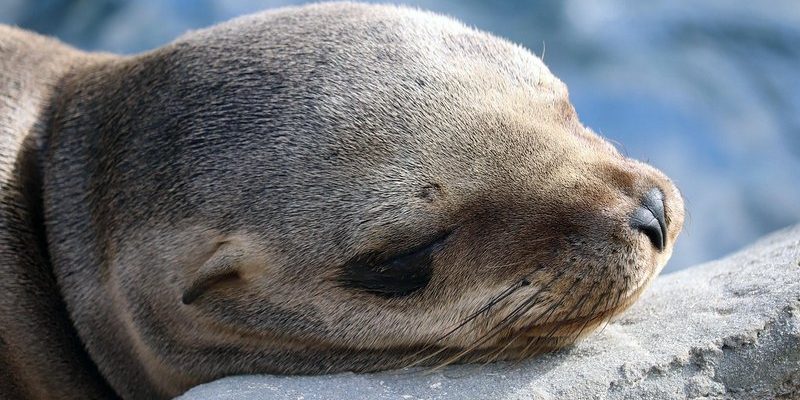
Honestly, the answer is more varied than you might think! Sea lions are known for their adaptability and can be found in many different environments. Let’s dive into the different locations where you can find sea lions, and what makes each of these habitats special for them.
Coastal Regions: The Classic Habitat
Sea lions are most commonly found along the coastal regions of the Pacific Ocean. You’ll often spot them lounging on the rocky shores or sandy beaches of North America, particularly in California. They love these areas because the waves provide a steady food source and the land offers the perfect sun-bathing spots.
In the wild, you could find California sea lions anywhere from the beaches of San Francisco to the Channel Islands. They’re social animals, often gathering in large groups called pods. Imagine a big family reunion where everyone’s catching rays and making a lot of noise! These coastal habitats provide not only nourishment but also safety from predators like sharks.
Tide Pools and Rocky Outcrops
Within the coastal regions, tide pools and rocky outcrops are crucial for sea lions. Tide pools offer a buffet of food options, such as crabs, clams, and sea urchins. When the tide goes out, sea lions can be seen foraging in these small pools, using their whiskers to sense movements in the water.
The rocky areas provide a safe place for them to rest and give birth. With nooks and crannies for shelter, these spots help protect their pups from potential threats. So, next time you visit a coastal area, take a moment to look for those charming sea lions hanging out in the rocky spots!
Subarctic Regions: A Surprising Territory
You might be surprised to learn that sea lions can thrive in subarctic regions, too. Places like the waters of Alaska and parts of Canada are home to the Steller sea lion, a larger species that prefers cooler climates.
These sea lions are equipped with thick blubber, which keeps them warm in frigid waters. They are generally found along the Alaskan coastline, where they can feast on a diet rich in fish, squid, and other marine life. Picture them as the tough explorers of the sea, roaming these chilly waters with ease while keeping an eye out for larger predators like orcas.
Importance of Ice Flows and Cold Waters
In subarctic regions, ice flows are important habitats for Steller sea lions. They use the ice to rest and socialize. When the ice breaks up in the warmer months, they often move to coastal areas. These seasons affect their availability of food and space, making it crucial to understand their migratory patterns.
So, if you ever venture to the northern coasts, keep your eyes peeled. You may encounter these majestic sea lions, comfortably lounging on ice and utterly at home in their chilly surroundings.
Rivers and Estuaries: An Unexpected Find
You might be wondering, “Rivers? Really?” Yes, sea lions can also be found in rivers and estuaries! Certain populations, like those in California, have been spotted moving inland along rivers, particularly during the spawning season for fish.
Estuaries provide a blend of salt and fresh water, creating a fertile feeding ground for many marine animals. Sea lions often venture up rivers like the Columbia River where they hunt for salmon. It’s like a delicious buffet that’s too good to resist!
The Importance of Migration and Food Sources
Migrating up rivers can be a seasonal activity for sea lions, depending on food availability. When salmon spawn, sea lions follow, taking advantage of this bountiful feast. This behavior highlights how adaptable these creatures are and reinforces their role in the ecosystem as top predators.
While it might seem unusual for sea lions to be found in rivers, it showcases their versatile eating habits and resourcefulness. If you’re ever near a river known for salmon runs, keep your camera handy—you might catch a glimpse of these playful animals as they indulge!
Marine Protected Areas: Conservation Efforts
Now, let’s talk about why it’s important to protect these habitats. Many sea lions thrive in marine protected areas (MPAs) which offer a safe space for them to live, breed, and feed. These zones are essential for their survival, as they ensure fish populations remain stable and prevent habitat destruction.
One famous example is the Channel Islands National Park, where sea lions bask on the shores and hunt in the nutrient-rich waters. Conservation efforts here focus on keeping these environments healthy. Imagine a sort of VIP club for sea lions, where they can feel safe and thrive—we need to make sure they have access to these spaces!
Community and Ecological Role
Marine protected areas benefit not only sea lions but also the entire ecosystem. These areas protect biodiversity and allow various marine species to flourish. As top predators, sea lions help maintain fish populations, which in turn affects the health of ocean habitats.
Supporting conservation efforts is crucial. It’s not just about sea lions; it’s about preserving the intricate web of life in our oceans. By protecting their habitats, we’re ensuring that future generations can enjoy these wonderful animals.
So, where are sea lions found? The answer is rich and varied: coastal beaches, subarctic waters, inland rivers, and even specially protected marine areas. These adaptable creatures have a knack for finding the best spots to live, feed, and play. Whether you’re observing them sunbathing on a California beach or migrating through a river, one thing remains clear: sea lions are a vital part of our marine ecosystems.
Understanding their habitats can help us appreciate their role in the environment and the importance of conservation efforts. Next time you hear a sea lion barking or see one lounging in the sun, you’ll know a little more about where it comes from—and that’s pretty cool!

